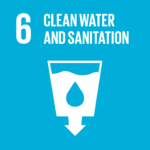Despite progress, 2.2 billion people still lacked safely managed drinking water services, 3.5 billion lacked safely managed sanitation services, and 2.0 billion lacked basic hygiene services in 2022.
As we stand at the dawn of 2023, humanity faces a critical juncture: the pursuit of water security. In an age marked by escalating climate change and swelling populations, the quest for clean water has become a dire necessity, not just for health but for the very fabric of life. The United Nations’ stark warning in its World Water Development Report 2023 paints a picture of a world teetering on the edge of a severe water crisis.
RELEVANT SUSTAINABLE GOALS

Progress and Setbacks
Safe water, along with sanitation and hygiene, forms the most fundamental human need. Yet, as we venture closer to 2030, the stark reality is that billions may lack access to these basic services unless progress increases fourfold. The demand for water has eclipsed population growth, with half of the global population facing severe water scarcity for at least one month each year.
Water scarcity, a byproduct of rising global temperatures, is an ominous harbinger of future challenges. The link between water availability and climate change is undeniable. In some regions, droughts exacerbate water scarcity, impacting health, productivity, and threatening biodiversity and sustainable development.
Despite the grim forecast, there has been progress. Between 2015 and 2022, access to safely managed drinking water rose from 69% to 73%. Yet, this is a fraction of what is needed. As of 2022, 2.2 billion people still lacked safely managed drinking water, 3.5 billion were without proper sanitation, and 2 billion were deprived of basic handwashing facilities.
The Wake-up Call
Addressing this crisis requires a multi-faceted strategy. Investments in infrastructure, ecosystem protection, and hygiene education are vital. But so too is the need for innovation, cross-sectoral coordination, and a holistic approach to water management. It’s about connecting the dots – linking water to poverty reduction, food security, and ecosystem preservation.
The burgeoning urban population intensifies the crisis. By 2050, the number of urban dwellers facing water scarcity is projected to double. The challenges are multifaceted, compounded by conflicts and the changing climate.
Alarmingly, only 0.5% of Earth’s water is usable and available as freshwater. Limiting global warming to 1.5°C, as opposed to 2°C, could significantly reduce the proportion of the global population suffering water scarcity. Yet, this is a daunting task, given the variability across regions.
The Path Forward
So, what can we do? It begins with awareness and action. Civil society organizations must hold governments accountable, push for investment in water research, and ensure inclusive governance. Every individual has a role, from participating in campaigns like World Water Day to making conscious choices in daily life.
Achieving universal water and sanitation coverage by 2030 will require a substantial escalation in current efforts: a sixfold increase for drinking water, fivefold for sanitation, and threefold for hygiene. It’s a herculean task, but not insurmountable.
As lakes, rivers, and reservoirs undergo rapid changes, and as water pollution continues to pose significant health and environmental risks, the call to action becomes more urgent. We stand at a crossroads, where our collective response to the water crisis will shape not just our present but also our future. The time to act is now, with the understanding that every drop saved, every policy changed, brings us closer to a world where water is a right, not a privilege.
You may also be interested in :
Going With The Flow : The Relationship Between Water and Migration


